Here's Your ETA: Next TvT Issue NOW! (Magazine)

⌨️ From the editorial desk...
[ - by Ness]
Although it was pretty quiet around IOTA and Shimmer the last few weeks and everybody's waiting for the ShimmerEVM, the community got loud and raised their concerns about the communication path of the IF. And it worked. At least a little since Dom gave us a rough ETA for the Shimmer EVM: sometime in September.
Until then let's have a look at what happened in the past weeks. As always ID.Iota provided the monthly update about the technical progress for you. We also had the pleasure to talk to some interesting people from our ecosystem: Mat Yarger and Mariana de la Roche.
If you want to learn a little bit more about DeFi DigitalSoul.x got your back. He summarized the 5th session of the DeFi education for you.
Have fun reading and stay tuned for a lot of exciting things happening in the Shimmer and IOTA ecosystem 🔥
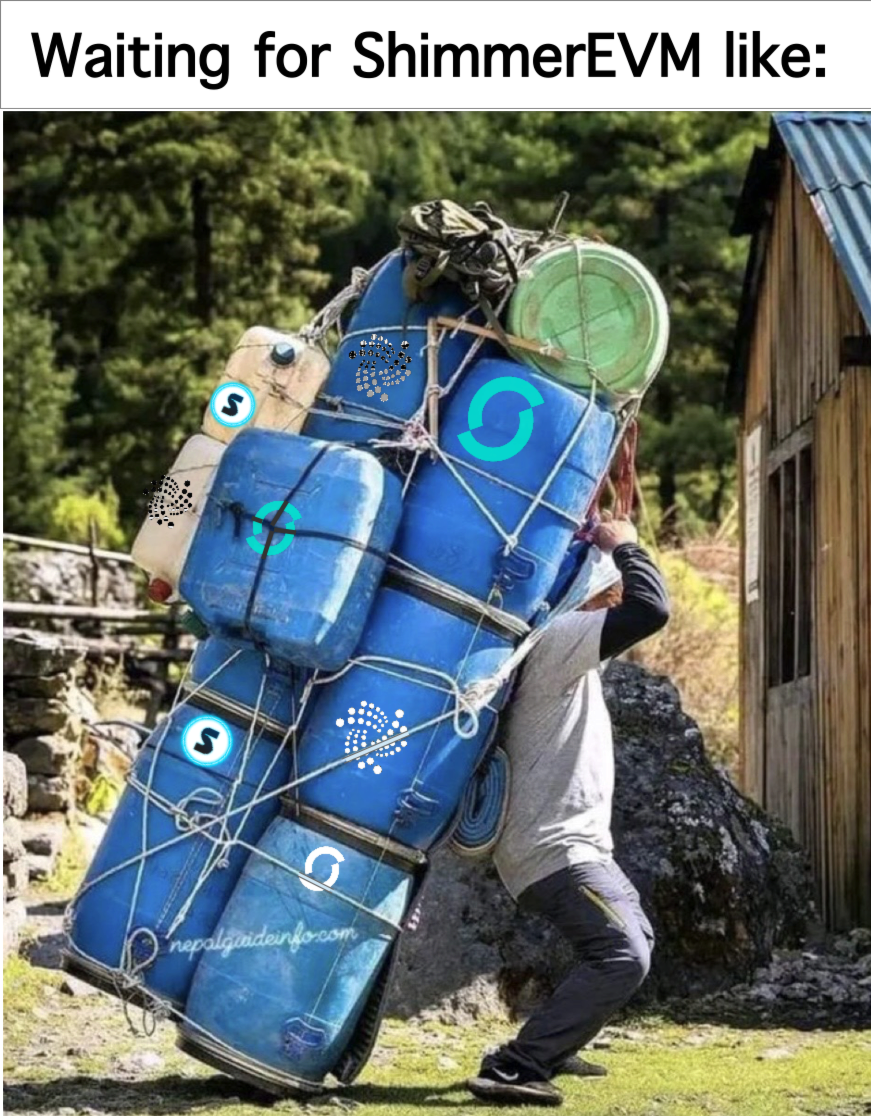
👨💻 Monthly Technical Update
[ - by ID.Iota]
GM 🌅 #IOTA Fam 🤖
It has been another month since I last provided an update on the latest developments in iota-core. While I anticipated a potential slowdown in development efforts due to the annual summer holiday break, we are witnessing quite the opposite. GitHub activity is ablaze.
To put this into perspective, let's take a quick look at the statistics. The developments around coordicide are primarily influenced by changes in the GitHub repositories: iota-core, iota.go, and hive.go. The team has collectively worked on 94 pull requests, of which 87 have already been merged into the codebase, leaving 7 still open. Judging by the GitHub activity, it doesn't seem like the team has taken much of a holiday. Not that I am applauding that, but it truly appears to me that the team is relentlessly pushing forward to finally showcase what they have been diligently building for so long.
Now, let's delve into what transpired this month. But before we do, remember to “Read the disclaimer baby!”
Disclaimer: The information provided in these updates comes from the official IOTA GitHub (https://github.com/iotaledger) and the IOTA discord server (https://discord.iota.org). The interpretation of that information, however, does not represent official information from the IOTA Foundation. While we strive to ensure the accuracy and reliability of the content, it is important to note that the updates reflect community perspectives. For official announcements and statements, please refer to the IOTA Foundation's official channels and communications.
As usual, let's take a brief moment to recap what we discussed last month. In July, the team primarily focused on certain topics. They successfully completed the implementation of Mana and Mana Account support, while concurrently working on incorporating Congestion Control and Staking functionalities into the protocol – all while aiming for expediency. Remarkably, both network congestion control and staking features have reached completion roughly two weeks ago. You can observe the progress in PR#130 (congestion control) and PR#143 (staking) within the iota-core repository. In addition to the progress evident on GitHub, Jonas also recently confirmed the finalization of these features in a Discord update just a few days ago.
With the inclusion of these features, we are now nearly feature-complete for IOTA 2.0. This signifies a shift in the team's focus from introducing new protocol features to the meticulous refinement of existing parameters. Their efforts now encompass compiling all pending ToDos, closely monitoring issues, rectifying bugs, and rigorously conducting comprehensive testing.
This activity is evident throughout GitHub: A multitude of bug-fixing pull requests are emerging and promptly being addressed. Additionally, the team is in the process of consolidating all outstanding ToDos within the codebase, embarking on an effort to clean up the codebase. Furthermore, the team has commenced the process of tracking every single open issue on GitHub, indicating that a maturity state has been achieved that lets you finally handle the amount of remaining open issues. A significant step forward in the journey towards achieving a polished and deployable codebase. Incidentally, the iota-core repository currently accounts for 51 unresolved issues. Over the past month, a total of 34 new issues were raised, while 36 issues were successfully resolved.
The team has also begun actively improving the APIs and tooling required for accessing and utilizing the network. The adaptation of the Hornet wallet, explorer, and other components to align with the demands of iota 2.0 is presently in progress. Jonas has recently provided commentary on the outstanding features and actions essential for progressing towards the public testnet milestone.
Beyond enhancing APIs and tooling, addressing documentation needs, and intensifying testing and bug-fixing efforts, he underscored four primary features that remain to be integrated. These encompass the completion of the node autopeering mechanism (Iss #49), implementation of warp sync and additional enhancements to node usability (Iss #193), design of the tip selection mechanism for active validators (Iss #240), and the establishment of the account creation process (Iss #278). All the pending features are meticulously documented in the iota-core issues list. Notably, Issue #240, which pertains to tip-selection for validators, boasts a comprehensive explanation and serves as an insightful read for those seeking to delve deeper into the details of protocol design. As for Issue #193, involving the implementation of warp syncing, active pull requests (PR #280 & PR #293) are presently underway to address the matter and potentially resolve it soon™ (I guess).
So, yet another month passes, marking both accomplishments and a fresh array of tasks that lie ahead. And indeed, Jonas has emphasized the dynamic nature of the remaining tasks list, acknowledging the possibility of the roster of missing features and apparent issues expanding over time. The question remains where are we with Coordicide and WEN?
From this point onward, it's important to note that everything presented is purely speculative and stems solely from my intuition. However, the trajectory seems evident – progress is accelerating at an impressive rate. The team is actively curating a comprehensive ToDo-List that encapsulates the remaining tasks for each component, a clear indication of the concerted drive towards completion. Testing endeavors have been underway for a month now, and the resolute enthusiasm of the developers within Discord remains unwavering.
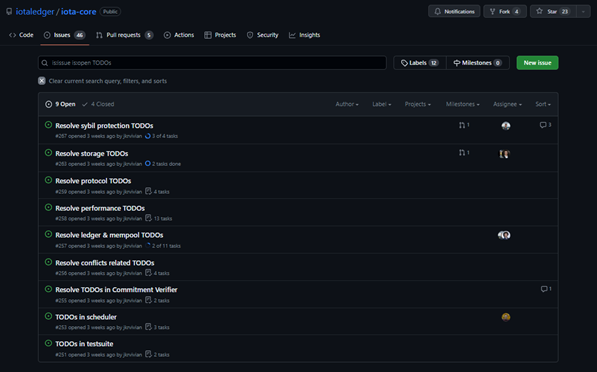
Notably, more and more research engineers are engaging in discourse with the community, injecting heightened excitement as they eagerly anticipate showcasing the fruits of their labor. Nonetheless, it's essential to acknowledge the potential divergence between the perspectives of developers and the broader community – a dynamic that warrants careful consideration. While the protocol itself might be nearing readiness for deployment, with only minor features and bug fixes remaining, it's crucial to recognize that a finalized protocol doesn't encompass everything necessary for the realization of coordicide. As highlighted earlier, various pieces need to seamlessly converge. Tooling must be in place to enable community access to the network. Comprehensive documentation is essential to empower developers in comprehending and engaging with the network. Furthermore, adaptations are required to facilitate the integration of Layer 2 solutions, enabling them to anchor with IOTA 2.0 and handle matters such as mana fees. Amidst all these factors, a palpable sense of excitement prevails. I am strongly convinced that it's not a matter of 'if' anymore, but rather a matter of 'when' coordicide will be achieved. My best estimation would place the unveiling of a public testnet around November or December of this year. And when that public testnet becomes accessible, I am inclined to believe it will exhibit a commendable level of stability for us to engage with.
That wraps up my speculations. Let's not add undue pressure to the diligent development team. It's abundantly clear that every member is fully committed to crafting a success story that benefits all. I eagerly anticipate sharing the next month's progress with you, so stay tuned. As for now, brace yourselves – exciting times are ahead! 😎 🚀.
TLDR: Exciting developments in IOTA-core despite the summer break. GitHub activity on fire. Coordicide elements nearing completion. IOTA 2.0 is nearly feature complete. Speculated public testnet around Nov/Dec.
ID_IOTA
🤐 We're on a path to decentralization, not just with Coordicide
[ - by Mart]
As you might have noticed, the IOTA Foundation got rid of ETAs quite some time ago. While this wasn’t exactly a community favorite, many people could see the reasoning behind it. Previous ETAs were overly optimistic and used to create hype within the community. The problem though: if there’s no chance to meet the ETAs and there’s no follow up communication, things might get messy.
That’s the exact reason the “No ETA policy” was made. While it was the best decision they could have made given all the things that happened, something had to give. Communities, ecosystems and the whole space are evolving at rapid speeds, and you need to adjust not only your communication strategy.
So, for a while now, something was brewing within the community. While many people certainly believed that the IF were progressing really well, there was no adequate communication about the progress and the road ahead. Just in line with the “new” credo: under-promise and over-deliver.
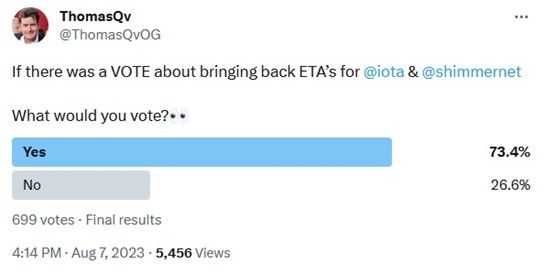
When Thomas asked the community about bringing back ETAs, the result was pretty clear. In the following days, many discussions arose in different places. From projects on the Touchpoint Server, in various Channels of the IOTA Discord, the picture was always the same: many community members, contributors, builders and even projects were dissatisfied with the current state of affairs.
Ultimately, it led me to writing my longest post on the Discord Server yet, 1131 words, phew! I touched a lot of the topics mentioned above. I was scared that we would reach a point of no return, with too many community members and projects turning their back on IOTA. It was supposed to be both a wake-up call and a call to action. I had also talked to different people within the ecosystem, who were just as motivated as me, to tackle this problem with a proposal, so through the official governance process.
Luckily this wasn’t necessary as of today. The follow-up discussion after my post was really fruitful, fair and finally led to Dom addressing this issue on the same day.
Summary: he / the IF is aware that the strict no ETA policy is a bit of an overreaction and while it might have been warranted at some point in the past, that certainly changed by now. So internal discussions happen and once the IF reached consensus on a way forward, the community will be informed, and open discussions can start to happen.
Truth be told, at this point in time, nobody knows if the result is going to be satisfying or just a small, insufficient step in the right direction.
But to close my little editorial, I want to emphasize two things. Two things that already had a big influence in IOTA’s past and certainly will have even more on IOTA’s future: Our amazing community and the IF’s willingness to collaborate with it. No doubt that some things needed to change earlier, but hindsight is always 20/20. Maybe it was necessary to reach critical mass in terms of community sentiment, to get something going. But I am very optimistic that communication and updates revolving around the various important topics is going to change soon. Just look at the broader crypto space, how many projects don’t listen to community feedback at all? How many projects even have no community at all?
As the protocol progresses rapidly towards an open technology and decentralization, the community is doing the same. The beauty of DLT (or least as it's supposed to be) is decentralization. No one man has the power to reign, to decide over other peoples’ heads. And my bet is on this unique community, to steer this whole project in the right direction, so decentralization is happening right now and will probably keep happening on various levels, not just with Coordicide. So, bottoms up for the f****** best community out there!
🏆 NFT Top 3
[Editorial intro by DigitalSoulx]
EpochZero has offered to provide custom, monthly NFT statistics for inclusion in our magazine in exchange for a bit of promotion, and we gladly agreed. We hope that you agree that this data is a welcome, value-added addition to our publication. Do you have other ideas of specific NFT-related statistics that would be interesting to include? Reach out to us and let us know!
About EpochZero:
EpochZero began as an NFT project created by several active members in the IOTA community. Their suite of tools for analyzing other ecosystem NFT projects as well as the supporters of those projects has already become the go-to resource for the community. The only requirement for full-access to these tools is holding one of their Pharaoh NFTs.
However, EpochZero is not just about NFTs. The founders of the project also hope to attract early-stage investors who wish to support unique ecosystem projects. This will allow community members to participate in the development of these projects. There are even more ambitious plans like starting a DAO, a game related to the Pharaohs, etc. Sound interesting? More information can be found via the links below. Check 'em out!
[NFT data provided by EpochZero]
As we collectively await the much-anticipated launch of the EVM while navigating the meandering paths of this languid crypto summer, a dynamic symphony of projects persists in propelling the ecosystem forward! Amidst the gentle breeze of uncertainty, let's delve into the vibrant tapestry of the past 30 days, where the Top NFT projects have woven their tales of triumph.
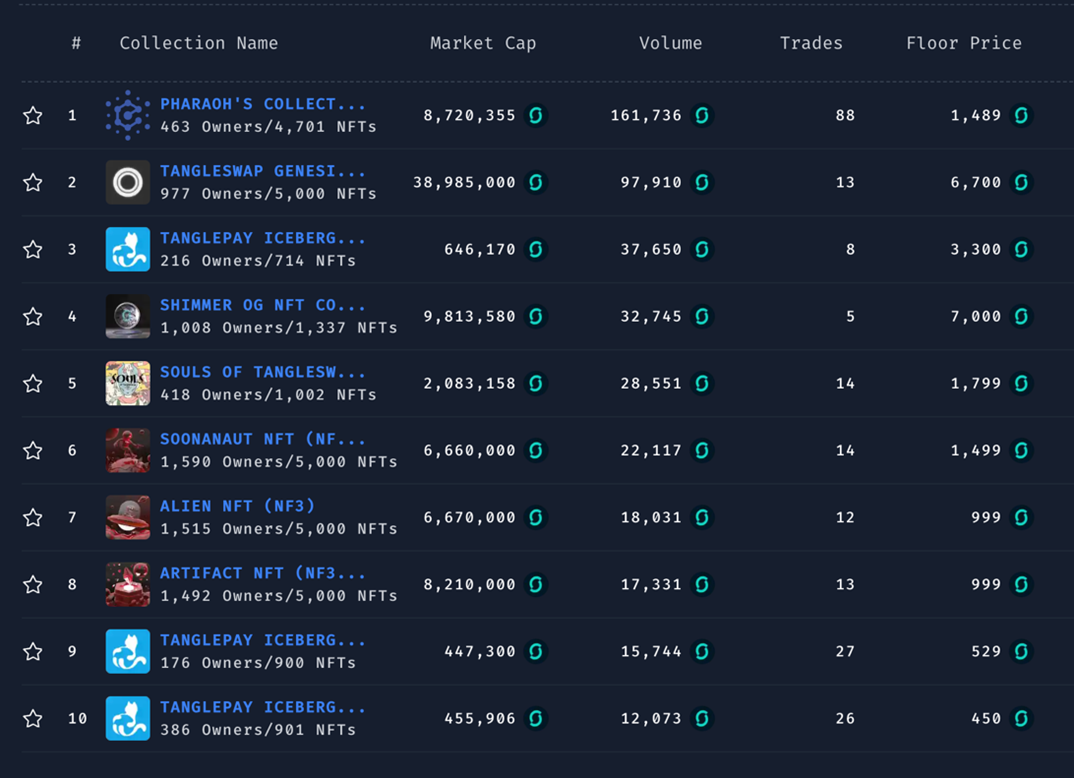
1. Pharaohs Collection – Like an unwavering comet streaking across the cosmos, the Pharaohs Collection retains its lofty throne at the zenith. With a resounding crescendo of 88 trades and a staggering 161,735 SMR Volume in the span of a single lunar cycle, this locomotive shows no sign of deceleration.
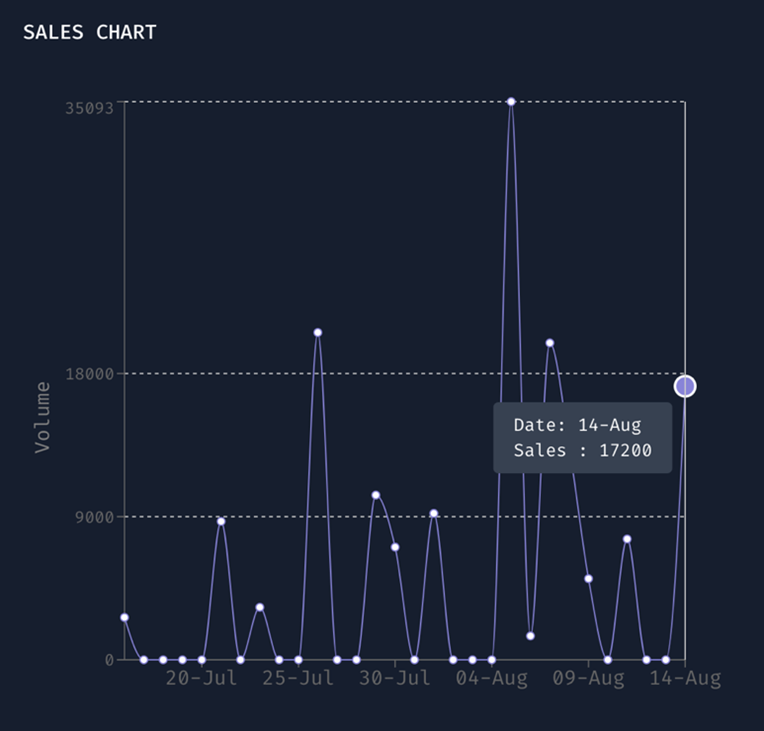
2. TangleSwap Genesis NFT – Firmly ensconced in the second echelon, the TangleSwap Genesis NFT maintains its robust stature. With an unyielding Floor Price of 6,700 SMR, it stands as a pillar of unwavering strength.
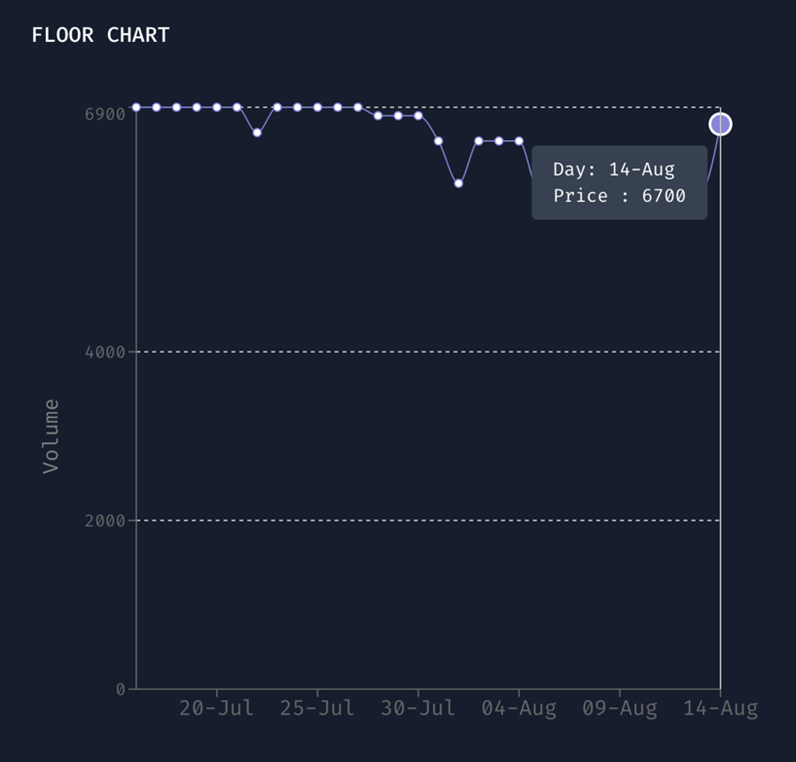
3. TanglePay Iceberg Legends (Epic) Tier3 – Surging forth like a tempestuous tidal wave, the TanglePay Iceberg Legends takes its rightful throne at the third vantage point. Outpacing its predecessors, this legend holds dominion over the #3 position, boasting a trading Volume of 37,650 SMR, an embodiment of unparalleled prowess.

As we turn our gaze toward the enigmatic realm of the Global Whale Club, intrigue dances upon the horizon. The constellations of whale positions have undergone a seismic rearrangement, and the echelons of their holdings bear witness to a metamorphosis of grand proportions. With a mighty roar, they beckon us to join their ranks, to ride the currents of fortune.
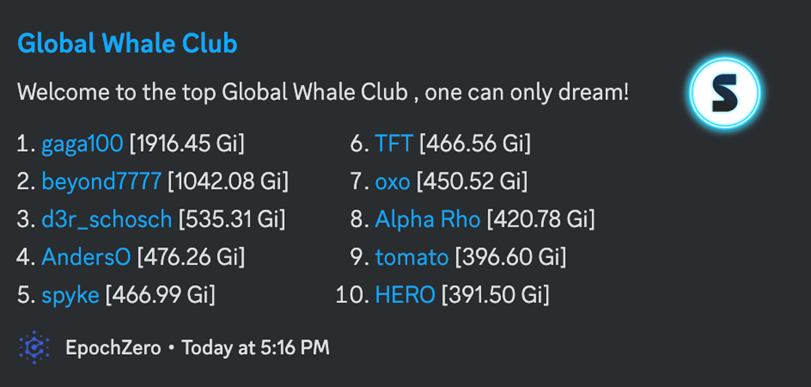
For those who derive pleasure from the intricate dance of data, a world of analytical treasure awaits your exploration. Cast aside the ordinary and venture forth to the extraordinary realms of Epochzero.io and nft.epochzero.io. There, the tools of analysis become your compass, guiding you through the labyrinthine landscapes of the NFT marketplace, a realm brimming with secrets and possibilities. Embrace the invitation to journey deeper, for in the cryptic numbers lies the key to unlocking the mysteries of this digital frontier.
👩 Meet the IF - Mariana de la Roche
[ Interview by Mart]
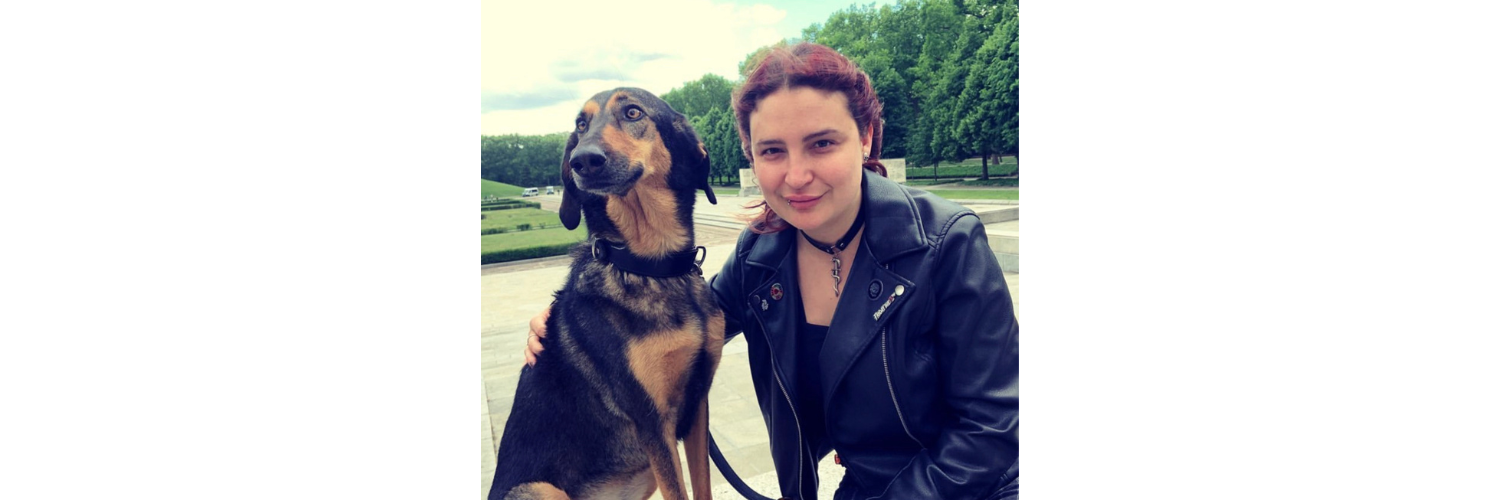
The Tangleverse Times: Although this is supposed to be a casual interview, I think this question will become a staple. So how did you find out about IOTA and how did you find your way to the IOTA Foundation?
Mariana de la Roche: As you may already know, I am a lawyer with post-degree studies in human rights and humanitarian law. Before my involvement with IOTA and before coming to Germany, I worked at the Transitional Court in Colombia, primarily conducting regulatory research for the application of international law. Additionally, I worked with the development sector, particularly on child protection and justice. Through my work with the development sector, NGOs, and international organizations, I learn about the limitations that these organizations faced to achieve progress towards a more equitable world and achieving their missions. This led me to explore potential solutions, sparking my interest in technology in particular blockchain and A.I.
I moved to Germany in 2016, facing the challenges of being a new migrant, while simultaneously establishing my own consultancy/tech platform for global organizations in the realm of female health. I eventually sold this company to a US/Indian organization last year.
Concretely regarding IOTA, my introduction to them occurred in early 2018. I started reviewing their projects and the potential of the technology, at that time it catched my attention the potential for the technology to be scalable (in comparison to others) and the chances it had to be deployed in places with poor infrastructure. One day, I stumbled upon their search for a social impact project manager and thought this was a perfect match to merge my expertise in project implementation and law, with my curiosity about blockchain's potential. I decided to apply and after three interviews and a long test that consisted in reviewing a project plan and provided feedback, I officially joined the IOTA Foundation in October 2018.
I truly have a strong belief in blockchain's capacity to create meaningful impact. That's why I took the opportunity to become a part of the foundation back then. My motivation was to gain direct insights into its potential from the experts in the field while taking the change to work in shaping the way for an industry that has the potential to produce positive impact.
TvT: It sounds crazy, but we’re already nearing the end of the meteorological summer. In my opinion Fall is the perfect book time. Nothing better than a book and a nice tea! Do you have any book recommendations? We’ve had our fair share of nonfiction ones, so did you read any interesting novel by chance?
MdlR: Well... depending of where you are located, (the tea part sounds like UK, otherwise you would have say coffee ;) ) it might sound weird to you, but we're actually just starting to experience summer in Germany due to the shifts caused by climate change. However.... any time is a good time for books. Unfortunately, I haven't had as much time as I use to (or want to) for pleasure reading lately. Most of my recent readings have been reports and regulatory materials, quite different from novels! And probably you do not want me to talk about those here ;)
Currently, I'm making an effort to practice my German by reading a book in German but funny fact, it's actually an Argentinian work by Jorge Bucay called Cuentos para Pensar/ Stories for Thinking or in German: erzähl mir eine geschichte, and I find it quite interesting so can recommend it to you. However, my all-time favorites usually revolve around dystopian themes. I adore Brave New World and 1984. Also I am crazy about historical fiction from Vargas Llosa like La Fiesta del Chivo/ The Feast of the Goat. But for classic Novels, Hermann Hesse's Steppenwolf and Fausto from Goethe will always hold a special place in my heart. I have a soft spot for Les Fleurs du Mal by Baudelaire and Edgar Allan Poe's The Raven as well as Pride and Prejudice. Actually mostly everything from Jane Austen is a good read (I think I have read more than one of her books more than one time)…ohhh and the Grimm brothers, I love the original stories… as you can see.. I enjoy mostly the classics….
A more recent recommendation for Novels that I really enjoy would be "The House of Mango Street," a short yet beautifully written book. And of course, being Colombian, I must always suggest Gabriel García Márquez's Cien años de Soledad/ One Hundred Years of Solitude or Jorge Isaacs’ La María. Both are remarkable novels that capture the essence of Colombian literature. “The country of the yellow butterflies” as Garcia Marquez calls it :)
TvT: Breakfast is the best meal of the day! You’re from Colombia, what’s a Colombian breakfast we really need to try?
MdlR: The ultimate Colombian breakfast unquestionably is arepas (in any of their various delicious forms and flavors..plain or stuffed, salty or sweet ... ). Also, one of the things I truly miss are the fruits—we have back home such an immense variety of fruits that you can not imagine! And they are a mandatory part of every Colombian breakfast in the form of a plate of fruits or a fresh juice. Granadillas and Papaya have undeniably secured their spots as my all time favorites.
TvT: Do you like going to concerts or music festivals? What was your favorite one?
MdlR: I love concerts, I quite often go to small punk and rock concerts organized by friends. However, I don't really enjoy festivals if I have to stay in a tent. Camping is definitely not my strong suit. So, until today, I've never been to a festival where I needed to spend the night.
That being said, a few years ago I attended Stereo Picnic, a festival in Bogota. I got to see Red Hot Chili Peppers and Pixies, which was an awesome experience. I've also been to Rock al Parque in Bogota, many many times, never missed one when I was living there. I saw some amazing bands for free there, like Dead Kennedys, Molotov, and Ilegales, among many others. Same with Alta Voz in Medellin where it did not stop raining and I ended up full of mud, rain and dirt during only to don’t miss the music and the mosh.
As for concerts, probably P.O.D and The Addicts stand out to me due to their fantastic performances. And Tiger Army, well, I've always wanted to see them.. I flew at 3 am back to Berlin from a conference in Reykjavik just to be on time to the concert that day. But if I had to pick just one, it would definitely be the tribute to the Ramones where Marky Ramone was on the drums playing with the rest of the Misfits. It was simply epic.
TvT: Which pastime couldn’t you live without?
MdlR: I do not really think I have one…. but maybe boxing can count …. It is my ultimate stress releaser…or If you can count drinking coffe as a pastime… then probably that would it be….However, I have a really bad habit that is that I can not really sleep in total silence, so I tend to turn on the TV and put some series I know by heart like Friends, Big Bang Theory or How I meet your mother and let it run until it shuts down automatically… if there is no TV probably will be some music or podcast on my phone… my partner hates it hehehe.
TvT: There is this everlasting question of dogs vs cats. Which team are you on? Do you have any pets? If so, please share a picture with us!
MdlR: 100% a dog person! (I still love cats tho - my sister has 3!!!)
I have a dog name Mila, she is my shadow!
Mila is 4 years old, I rescued her with an NGO from Cyprus… and she is really sweet but also really really weird hahaha sometimes with some of the IOTA colleagues at the office and my friends we call her the “Alien” cause she does not behave like a normal dog….. unless you have cookies!
(here in the pic you can see her sweet and manipulative “it was not me” face)
TvT: We’ve already asked Dom, but our goal is to have a full map of this phenomenon! Nutella with or without butter?
MdlR: WHAT??? I didn't even know this was a thing, but no… 100% NO to butter with Nutella! This sounds to me as bad as pineapple on pizza! Although… I love honey in scrambled eggs, and I put cheese on hot chocolate (traditional colombian thing to do) so I can't really judge people for trying out unusual food combinations ;)
TvT: Let’s talk about coinfessions! Are you guilty of buying some “not so serious” cryptos, or did you strictly and only invest into fundamentals and prospects?
MdlR: As I have always said, my greater focus and interest lies in Blockchain rather than Crypto itself. Therefore, up to now, I only purchase and hold coins tied to significant projects that I constantly monitor. My primary motivation for these choices lies in the potential these coins have for creating a positive impact on society and promoting sustainability which is ofc connected to the scalability of the project as well.
TvT: Many technological sectors are lacking enough women power, does that also apply to crypto? If so, what do you think needs to change to make crypto more attractive for women?
MdlR: It's true that many technological sectors, including crypto, have been struggling with gender diversity. The numbers show that women are still significantly underrepresented in the crypto space. The percentage of women involved in cryptocurrency trading and development roles is quite low, often around 10% and sadly it is a similar number for women in leadership positions within the industry.
Given this situation, couple of years ago I strongly encourage the foundation to establish a diversity initiative aimed at incentivizing not only more women but also individuals with a variety of backgrounds – be it gender, nationality, education, and more – to apply for our roles. By taking proactive steps to embrace diversity, we can create a more inclusive and innovative crypto space that welcomes contributions from a wide range of perspectives, ultimately driving progress, success and higher adoption within the industry while also representing the bast variety of individuals that we have in the world.
I'm pleased to see initiatives like Crypto Girls, led by Zoe Faircloth, and Women in Crypto Talks, spearheaded by Lavinia Osbourne, gaining momentum in our industry. The work they do is KEY to bring more women to the sector. I believe that a crucial first step in achieving diversity is not only creating equal opportunities but also showcasing role models that break down the myth that the tech industry is solely for or by men. By presenting strong and successful women in the field, and the work they are doing we can inspire and encourage more women to pursue careers in crypto, gradually shifting the narrative and driving increased participation from even more underrepresented groups.
This is why having women in leadership roles is so important for any company in our industry. However, fulfilling these roles entails a responsibility that must be embraced earnestly by the women occupying them. My own encounters with female bosses haven't always been positive, and these experiences have led me to ponder my motivation and commitment to the industry. These challenges have also fueled my determination to work even harder. I'm committed to working hard to become the kind of leader who can inspire others to achieve great things and encourage their growth rather than limiting them. It's a journey I'm dedicated to, for the betterment of the industry and the individuals within it.
TvT: The year is 2031, we’ve long since made it. Somebody from the community is approaching you to make your very own How I Met Your Mother style flashback with your best and funniest moments from your time with the IF. What situations would totally make it?
MdlR: Narrowing it down to just one memory is quite a challenge, as you might have noticed from my previous responses. I tend to have a hard time settling on just a single choice. That being said, I can confidently state that some of the most happy and funny moments have been shared with the fantastic people of IOTA Berlin. Our bond goes beyond mere colleagues; we've truly become close friends over time. And I have a lot of stories that I can remember just in the spot, like the time Laura became the DJ for my birthday party, the delightful self-made vegan treats that Tibo brings from time to time to the office, Asa's constant advocacy for healthier eating habits and her veto to our burger and pizza cravings, Levi’s warm gesture of treating my mom and me to dinner in Budapest during my mums visit to the EU, Max’s adventure getting lost after one of my birthday picnics, the unforgettable instance when I introduced David to the delights of arepas in Berlin or every time we tried to impossible organize a birthday cake and surprise lunch with the schedule of everyone being in meetings and calls. Funny fact: when I come to the office without Mila, before asking me how am I they ask where is the dog! Mila has become also a part of the team since she was a shy puppy scared of Jan’s chihuahua!
These bonds transcend IOTA; even when individuals have moved on, in the case of Tara, Lisa, Wolfgan, Matthias, Holger and Alexey we've managed to stay in touch. This demonstrates the depth of our connections and the enduring nature of the friendships we have cultivated.
The amount of funny and heartwarming anecdotes shared among us could easily fuel a ten-season series filled with laughter, camaraderie, and the lasting bonds we have formed.
🏦 How the eIDAS Regulation Accelerates Digital Identity Adoption
[ - by Jelle Milleenar]
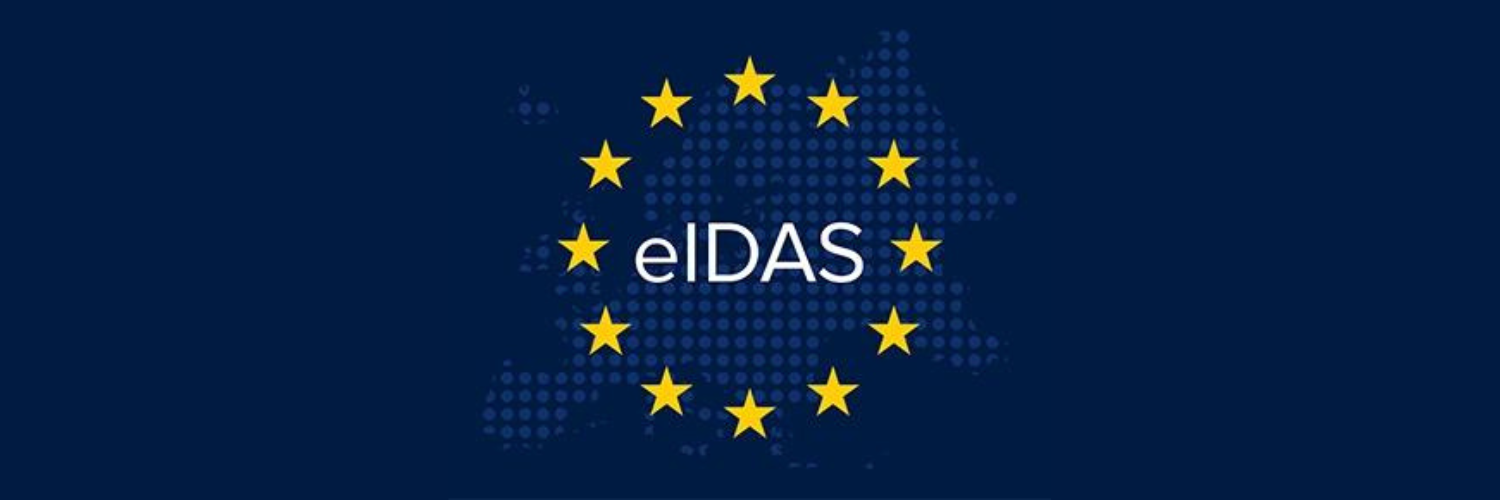
Digital Identity has become a hot topic across the globe. The concepts of Self-Sovereign Identity (SSI), where people regain control over their digital identity and data, are becoming mainstream. If you are unfamiliar with SSI, please consider reading more about it here. SSI is being explored by the major Identity and Access Management (IAM) players and is finding its way into digital identity and privacy regulations across the world. The most crucial regulation is eIDAS 2.0 (electronic IDentification And trust Services) in Europe. The regulation that is still being finalized, stands to completely change the game. Let’s explore how it enables SSI companies such as Impierce Technologies and the role that Blockchain may have.
eIDAS in short
The eIDAS 2.0 regulation is currently being finalized by the European Commission and is likely to go into effect in 2025. It defines an iteration of the current digital identity framework in the original eIDAS regulation. Where European citizens are currently able to digitally authenticate themselves to (local) government agencies in order to, for example, submit taxes, eIDAS 2.0 greatly enhances the system. Most importantly, the digital identity framework can now be used in the private sector and is even mandated across some major industries, including finance, education, and healthcare.
It redefines the current framework to follow SSI principles. Citizens will have a European Identity Wallet that allows them to collect signed statements about themselves and share them with whomever they decide. It follows privacy-by-design, enforces data minimization, and reduces the need for third parties to store personal information. Access to (digital) services becomes significantly easier as users can authenticate themselves and securely share trusted information without creating new accounts and remembering passwords.
Significant Adoption
The private sector has been wanting such an identity system for decades. It is therefore likely that the adoption of this new ecosystem will happen rapidly on a large scale. In the Netherlands alone, hundreds of companies, government agencies and start-ups are collaborating on a Dutch SSI ecosystem. The EU aims for 80% of the European population to make use of this digital identity ecosystem.
The system can save costs and reduce risks while improving the customer experience. Many sectors will jump on this opportunity as it can revamp customer onboarding, reducing Know-Your-Customer (KYC) processes from a manual process taking days and costing a significant amount per new user, to a near-instantaneous and free process. It will be easier to open bank accounts, sign up for cryptocurrency exchanges, join a university class, gather loyalty points and use e-prescriptions.
Trust Lists
eIDAS 2.0 is currently designed to enable use cases that rely on strong user authentication and where the Issuer is a company that wishes to register itself to its local government. It uses trust lists to identify which entities can be trusted to sign specific statements. For example, these lists would empower universities to sign degrees, while insurance companies can sign insurance credentials.
The process for inclusion on a trust list doesn’t fit well with smaller use cases such as badges, references, and work experience because becoming part of a trust list is a centralized process that will likely involve long government processes and creates excessive governmental control.
eIDAS 2.0 does not strictly require the use of trust lists. An alternative solution is the use of Decentralized Identifiers (DIDs). These identifiers allow entities such as people, organizations and even devices, to manage their own identification online without relying on any centralized authority. It can include evidence about who the identity is and provides the means to authenticate as the identity. For example, DIDs can be linked to websites, can be tied to (ISO) certifications or company registrations. This is the perfect framework for the smaller use cases (while also being suitable for the larger use cases).
The Role of Blockchain
Distributed Ledger Technology (DLT), often referred to as Blockchain, can play a pivotal role with the new SSI ecosystem created by eIDAS. It might no yet be trusted enough to support the high-assurance use cases from that require governmental oversight, but can enrich the ecosystem with an permissionless and public trust system. DLT can be used to store and grant access to DID Documents in a secure manner without having to rely on a centralized party.
Secondly, the DLT can act as a place to publish more information about the identity. The aforementioned data that helps identify the Issuer is directly tied to the identity and always available for validation. The DLT can simultaneously act as a revocation list, which lists credentials that are made invalid. Both the identity information and revocation information would then be accessible via a decentralized system, creating a method where no party, including the Issuer, has any notion of how credentials are used.
Conclusion
The European eIDAS 2.0 legislation is normalizing Self-Sovereign Identity concepts. When fully active, it will reshape how we interact online. The internet will transition away from accounts with passwords and make it much easier to identify yourself to new service providers such as webshops, universities, banks and even government services. Blockchain can have a pivotal role in supporting lower-assurance use cases, avoiding the need for excessive governmental oversight.
🎤 Interview: Mat Yarger
[Interview by Mart]

The Tangleverse Times: Could you give a short summary of what Demia exactly is?
Mat Yarger: Demia is focused on providing the essential tools needed for carbon markets to work effectively, unlocking and scaling the financing needed to meet decarbonization goals. Our data protocol and platform enable projects to secure data, remove friction, amplify impact and unlock value. Demia is built on nearly a decade of thought leadership, technology incubation, iterative piloting, and ecosystem development, working with institutional leaders like UNFCCC, IOTA, Gold Standard, Dell Technologies and others with whom we continue to collaborate.
TvT: What are your short and medium term goals with Demia and its partners?
M.Y.: At Demia we are focused over the coming quarters on providing value through a differing commercial model to Project developers, VVBs(Auditors) and Registries (Carbon Market Standards). We’re doing this by scaling up our ecosystem development efforts, progressing our platform development to reach production readiness by early next year, and ensuring the open data protocol is ready to onboard projects at scale.
TvT: How are governments reacting to what you are building? Are they aware of it and do they see the potential?
M.Y.: We were initially funded through grant funds from the Canadian government, and received follow-on funding to iterate on our initial developments. We avoid regulatory uncertainty by not embedding a financial token into our protocol, and focus completely on immutable data utility and tooling for climate markets. Overall, multiple government and non-government organizations have shown a positive response to this direction and are actively supporting its development.
TvT: With Covid and the Ukraine war, we could see global markets tumbling. The crypto space, unfortunately, was no exception to that. When do you think that Distributed Ledger Technology will be widely adopted and did anything change in your personal vision?
M.Y.: My belief is that Distributed Ledger Technology has to show real world benefit before a currency or multiple currencies get wide scale adoption. Through Demia we’re working tirelessly to ensure these real world applications and decentralized technologies can create real value and impact for people, companies, and governments to solve major problems they face. As we continue to do that, use cases for decentralized currencies will surface that garner larger scale acceptance. We just have to ensure that we’re ready when that time comes and we’re focused on building real world value until it does.
TvT: To people from the outside it often looks like most companies are “greenwashing” everything anyway. Do you think that Distributed Ledger Technology can put a stop to that?
M.Y.: Absolutely. The main problems in the climate market with scaling revolve around fragmented data, lack of trust in projects, lack of trust in the auditing and reporting from projects, and lack of quality with the data that it’s all built on. As we integrate DLT capabilities across climate markets, transparency and trust will grow due to the inherent value that DLT provides. Putting that data on a public ledger, becomes publicly verifiable. Digitization of that data monitoring, measurement, reporting and verification opens up the process to larger ecosystems of academics, auditing organizations, government and more to get access to that data and provide feedback on what they need to trust the impact the projects are making. Decreasing the silos across the industry, accelerating the rate of development, opening up investment opportunities, and opening up new markets for them to integrate into. We cannot shy away from what’s necessary by greenwashing the impact projects are making due to fear of public criticism. We have to welcome it, learn from it, and iterate more rapidly on how we monitor, measure and report on that impact so that we know what project creates the most impact for the dollar, and can ensure they have the funding they need to scale.
TvT: While emissions trading and monitoring via DLT are a good start, it might take a lot more to defeat climate change. What are the unique selling points of Demia? What can it do that wasn’t possible before?
M.Y.: When you look at climate markets, platforms are sparse, but services are plenty. One of the issues that Demia is trying to combat is the large scale fragmentation of services across centralized platforms in the market. We’re not trying to be a project developer, or auditor, or certifier. We’re trying to build better tools and communities that want to see project developers, auditors and certifiers thrive by securing the data, removing friction to access the data, amplifying the impact that projects, auditors, and certifiers can make, and unlocking value by creating more trust and transparency across the value chain. This is a fundamentally different approach from what you see in the market, where we’re trying to bring these various service providers together to aid in the guidance a collaborative platform and protocol should make, and identify tools that they need to make it.
TvT: The vision behind Demia probably requires billions and billions of (data) transactions, does IOTA have any kind of competition in that domain? Even a fraction of a fraction of a cent might be too much to be economically feasible. What do you think about it?
M.Y.: It depends on how you look at it. With the advancement of IOTA, data and storage deposits create a different structure for how data will operate on mainnet. Looking forward, we see that this could be an issue if we were aiming to put all of the data we’re enabling onto mainnet. So we’re ensuring we’re ahead of that potential issue, but building Demia as a Layer 2 that will anchor into mainnet. This provides a number of benefits. One being that projects can trust their data will be safe for years to come because the infrastructure supporting it is containerized into a dedicated environmental data protocol. The other being that, as IOTA itself progresses, we can enable an upstream/downstream model where we contribute to IOTAs capabilities through the learnings we acquire developing the Demia Layer 2 and vice versa, integrating capabilities from IOTA and Shimmer into Demia through a data-focused implementation. And lastly, because Demia’s Layer 2 protocol is not financially incentivized, we can act as a bridge for projects in other ecosystems. There are a number of protocols looking to tokenize credits, enable financial markets, or more that are not built on IOTA. They can now leverage IOTAs data capabilities in a secure and focused manner through integration with Demia as a Layer 2 to enable larger data reporting and oracle implementations for ReFi, sustainability, or other types of financial implementations that IOTA may not currently support.
TvT: Around April last year you joined the Moonaco Podcast and you did say some very interesting things. Are there any updates on the future mobility campus in Ireland?
M.Y.: Not currently, but we will be exploring mobility focused opportunities for climate and sustainability markets in the future.
TvT: There was another very intriguing point: You said that you talked to almost every major OEM in the mobility industry and that some of them are building on their own and basically everybody is aware of IOTA’s potential. Can you give any update regarding that statement? Are you still in contact with some companies, are they still experimenting with IOTA?
M.Y.: Same [as last question/answer].
TvT: Will fundraising and also spending money be easier now that you’re spun off? What are your experiences so far?
M.Y.: Absolutely. Spending money and raising money when working for a non-profit is a very different process that involves a number of decision makers when you’re trying to build or advance projects. With Demia, we’re a US based for-profit. This enables us to open up how we develop the platform, protocol, and ecosystem because we’re not under the same constraints. While a non-profit can typically only leverage grants and donations or whatever their endowment provides. A for-profit can pursue a much more diverse financial landscape to support developing and scaling a product. And it can leverage different business models, such as the Software as a Service model we’re focused on with Demia. Currently, Demia is in fund raising mode. We’ve started having conversations with a number of investors and are receiving very good feedback on the direction we’re taking and hope to update the community on our status there soon.
TvT: Lastly, our obligatory question: Will the community be able to invest into Demia?
M.Y.: This is a question I’ve grappled with myself, but have not discussed with many others. I would personally love to find a way to enable the community to invest into Demia, and show their support for sustainability focused initiatives and outcomes such as what Demia is enabling. However, since we’re not launching a currency, our ability to do that in a way that’s open to the community is limited. I’ve thought about taking a percentage of the equity we want to raise with and making it available on a community focused platform, but there are complications with these directions. I’ll continue to look and see if there is a path to enabling the community to contribute openly, and if I can find the right path, make sure the community is aware of us taking that direction.
📖 DeFi Education #5: Governance
[ - by DigitalSoulx]
Session #5: Governance
Presented by puncar [13 October 2022]
Summary, organization and additional detail by DigitalSoul.x
This DeFi session is all about governance. In it, we will briefly discuss the importance and evolution of Decentralized Autonomous Organizations (DAOs), the steps in the governance process and how to get involved, as well as a couple examples of current DAOs and their structure. The key takeaway is that although there several ways to contribute to protocol governance, the most important step is to simply GET INVOLVED! Other community members with more experience will be happy to guide you.
The Importance of Participating in Governance
Considering the number of people using DeFi, there are relatively few participating in governance. Even in a very well-known DAO like UniSwap, there are tens if not hundreds of thousands of Uni token holders and yet only a small subset take the time to contribute to proposals or vote. This is a problem, because the users of the platform should be the ones to suggest changes to the platform to improve it. Otherwise, whales or those with ulterior motives can influence the outcome of community votes and support changes that benefit them. Ideally, the community at large would offer feedback and opinions to the platform so the will of the community is reflected in its direction.
Real world elections offer a good example here. When there is an election for a high-profile public officer, some countries even make voting mandatory because they want everyone to consider the implications and to make their voices heard. So, the citizens truly choose the official that will be representing them. The same should be true for DAOs. And while the scale is much smaller, it’s still critical that users participate to make sure the direction of the protocol matches the will of those users.
The Evolution of Decentralized Organizations
The DAO

One of the first DAOs that brought people together in a decentralized way was The DAO. It didn’t last long, but it was surprisingly successful and changed the DAO landscape by illustrating the power of these entities. The DAO formed in 2016. It was on the Ethereum network and the idea was to start a venture capital fund that anyone could join by pledging their ETH to get DAO tokens back. Collectively, they then would decide where to invest those funds.
This was a straightforward concept, and it resonated with many people who sent their ETH into the contract. The DAO raised ~$150M in ETH, which equates to more than $18B today if you consider the price appreciation of ETH, so this was a sizable amount of money. However, unfortunately there was a bug discovered in the contract and all the funds were basically lost.
This was one of the biggest hacks in the history of blockchain. Luckily these were not true losses due to the power of governance. The community had a difficult time deciding how to handle this situation, and in the end the Ethereum network experienced a hard fork. A hard fork is a radical change to a network that permanently changes the ledger. A hard fork requires all nodes to upgrade to the agreed-upon version of the protocol software and ledger. By doing so, users effectively nullified the hacked contract and returned the ETH to the original owners. Those that didn’t agree that the funds should be returned were able to maintain the old version of the protocol as Ethereum Classic (ETC).
It should be clear from this example that governance is an extremely powerful method of enacting change in a crypto protocol. There is almost nothing that cannot be accomplished if enough users come together to support an idea. If people wouldn’t have participated in governance, all of the funds would have remained in the hands of the hacker. Instead, the community collectively decided to make a change, and by working together they made it happen.
Mango Markets & DAO

Another example was Mango Markets, a decentralized finance trading platform and DAO on the Solana blockchain. It was hacked in October of 2022, and the hacker took assets worth roughly $112M. It was hacked through the oracle that Mango was using to fetch asset prices. The hacker first took a loan which was not backed by much. By manipulating the price oracle, the collateral was valued at a level much higher than it should have been, allowing the hacker to withdraw over $100M from the Treasury.
The interesting development in this case is that the hacker used the funds they obtained to submit a proposal on the Mango forum. This proposal basically asked the community forgive ~62% of the amount that had been stolen, as long as the rest was returned to the treasury. If approved, the hacker hoped to escape legal action through a White Hat hacker agreement. A While Hat hacker is a person who uses their hacking skills to identify security vulnerabilities, but, unlike Black Hat or malicious hackers, White Hat hackers respect the law and attempt to help networks plug these security holes. The problem here is that the hacker was able to use the tokens they stole to vote for their own proposal, and since they possessed a big chunk of protocol tokens, they could easily influence the outcome of the vote.
So, how could the Mango Market hack be resolved?
One option could be for the core team to ignore the outcome of the vote. This is possible since they have over-writing power. They can’t override the hack of course, but they could nullify the proposal to allow the hacker to keep the funds.
Some protocols like MakerDAO have a shut-down process. This allows them to halt the whole protocol and put their native token into a contract which will get burned. However, this action is irreversible and highly complex, so it’s not done lightly. Also, they would need the support of the entire community to put this into action. After shutting it down, they would need to relaunch the token or even issue an entirely new one.
The most important thing is to try to learn from these mistakes, even if you’ve never used Mango Markets. There are governance education groups and forums where people discuss these issues and how to avoid them in the future so we all get stronger together. We are constantly innovating in governance, and these unexpected experiences help us to learn and evolve.
Innovation #1: Simplicity
The DAO had very complex contracts with many lines of code. This complexity made it more difficult to identify potential vulnerabilities. MolochDAO started to focus on really simple governance structures with the least amount of code in the contract. These contracts are easier to maintain and defend from hacks so there is less chance they will be exploited.
Innovation #2: Rage Quit Function
One other innovation is the Rage Quit function. Suppose The DAO issues 100 tokens and a user has 10 of them. That user’s holdings then represent 10% of the total treasury. If later there is $10000 in the treasury and the user decides to Rage Quit, they send their 10 tokens to the treasury and immediately take $1000 from the treasury, corresponding to their allocation of the total. They could quickly sell, take their percentage of the treasury and never come back. This is an interesting concept but it may not be possible to implement this in every protocol. At the same time, it does simplify the exit process and keeps it fair.
Innovation #3: Governor Bravo Governance Framework
Governor Bravo is a versatile, upgradeable governance framework developed by Compound. This smart contract framework allows governance votes to be registered on-chain, or directly on the distributed ledger of the protocol. It not only allows for yes or no votes, but even for abstaining and users can even add custom text notes to to their votes. This framework has become the standard for many DeFi and DAO platforms due to its simplicity and security.
Innovation #4: Delegation
We are all busy people and maybe we simply don’t have time to participate in governance as much as we’d like to. Even so, there are still ways we can contribute. In the case of Bitcoin and other networks, there is the delegation program. People don’t need to personally participate in governance; they can have a chosen representative do it for them. In this case, the only requirement is to specify the delegate of your choice and allow them to represent you in governance matters. Ideally, you would choose a delegate that has a similar vision and mindset as you do, so you feel comfortable trusting them with your tokens. Good delegates have an obligation to inform their community about their views on upcoming proposals to ensure alignment.
Innovation #5: Airdrop
An airdrop describes the act of a project earmarking a certain amount of their tokens and sending them for free to users who meet certain requirements. This innovation provides a protocol with a method for rewarding their community for participation while potentially giving them governance power as well. Some protocols might even monitor those who participate in governance to be able to offer them an airdrop later. This is because governance is very important to a protocol since it’s the best way for them to make useful improvements. It makes sense that the protocols would want to reward those who are working towards positive change.
Getting Involved
The overall process of governance can be summarized in five steps: Ideation, Proposal, Discussion, Voting and Execution. For most contributors and active participants the first three phases are the most important. These phases provide the highest value to the community. Voting and execution are just a formality in most cases, and the vast majority of the work occurs before this. High turnout at the voting stage usually reflects high turnout at the discussion and proposal stage. When people are active and get involved in these stages, they are usually interested in voting as well. If you have low interest in the proposal stage, the discussion might not even happen. So keep in mind that discussing in Discord or in the Forum will likely be your best opportunity for participation in governance. Still, let’s discuss each step in detail.
Step 1: Ideation
Ideation is the stage where a group of people brainstorm ways that the protocol can be improved. Let’s consider the Mango Markets example. It’s clear that the price oracle needs improvements to prevent future hacks. And while this is a more technical example, improvements can even be more business-driven or related to marketing. In fact, it can be any idea related to improvement of the protocol and is only limited by your imagination.
The point of ideation is to start the discussion about improvements. These discussions could happen in a Discord server, a Telegram channel, a crypto conference, etc. Even just through chatting with various people you could be ideating, even if you’re not aware of it. It’s about brainstorming ways to build new projects or generally to make the protocol better. Perhaps by examining other protocols you can learn from their successes or even their failures.
Ideation is one of the steps which is most impacted by culture. In traditional corporations, employee ideas and feedback are not typically valued by management. This is not so in Web3. In the crypto space you can make your voice heard, and through discussion more ideas can emerge to improve the protocol. This type of culture fosters creativity and inclusion. Everyone who is part of the community should consider getting involved, because everyone has a unique perspective and should share this with others.
Step 2: Proposal
This stage takes the original idea, refines it, and formats it based on the template provided by the protocol for presentation to the wider community.
Once an idea gains traction and support within a community, the next step is to organize and distill it into a proposal. This involves refining the idea by writing it down, to solidify and summarize the thoughts that were discussed in the ideation phase. It takes time to write a good proposal, so don’t assume that this is a trivial step. Sometimes it can be quite difficult to organize thoughts into a format that can be easily presented in a complete yet succinct document. At the same time, it will get easier to draft a proposal the more you’ve written. Every proposal is appreciated even if not approved because everyone can learn from it. Maybe the rest of the community thinks a bit differently that you do, but that knowledge can simply help to guide you in crafting your next proposal.
A proposal could be about funding requests, marketing programs, product enhancements, forking projects from other protocols to yours, changes to the governance structure, etc. Keep in mind that any proposal will probably need to pass a security review before progressing to the next stage.
Tip 1: As mentioned, there are frequently specific templates you must use when submitting a proposal. So, it’s a good idea to check the requirements and format required first to prevent extra work when writing a proposal. In many cases the template also will guide you make it easier for you to craft your proposal, so the template is a great place to start.
Tip 2: Check the scope of proposals that the protocol can accept. Many protocols have a Foundation or other entity that functions like a core team for the protocol. Even though centralized to some degree, these entities decide which aspects of the protocol can be changed by community vote. In this way, they also determine the extent of the DAO’s power. You may need to check to see what can actually be decided through governance within the DAO to make sure your proposal falls within that scope. This will prevent wasted time and energy.
Tip 3: Check to see if there is a reputation requirement for proposal submission. Some DAOs require you to have a specific trust level on the forum before you can offer a proposal. Maybe you are required to be a core contributor or maybe you simply need to have visited the forum for some predetermined length of time, like 3 months for instance. You should consider this before deciding to draft a proposal. The requirements are usually readily available, but it’s important to know that you’ll actually be able to submit your proposal before spending time writing it.
In the case of IOTA, it’s enough to simply get involved on the forum. The more pages you visit and the more of your opinions you share, the more your reputation will rise. By offering feedback and helping others to improve their proposals first, you will easily reach the minimum required trust level for proposal submission.
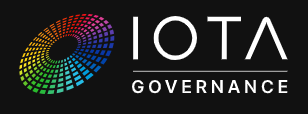
Tip 4: Check for other requirements. Some protocols require proposal submitters to hold some amount of tokens before allowing submission. If you don’t hold the minimum number of tokens to be able to submit a proposal, you may need to use a delegate to submit.
Ideas and proposals are worthless if they only live in your head or are discussed in a closed group of friends. Take a chance and offer them up for public discussion and solicit feedback from other community members. Doing so leads to a more refined proposal that much of the community may already support, improving the chances that your proposal will pass. This leads us to the next step in the governance process: discussion.
Step 3: Discussion
Now we can collaborate with the wider group to collect the opinions of other like-minded individuals and to assess the feasibility of the proposal in terms of execution.
If you decide to share your proposal with the rest of the community for discussion, it will help to keep a couple of recommendations in mind:
1) Be responsive to comments and open to change. These protocols are decentralized and many community members are located in different countries. Others may have a different perspective and see things differently, but this can only serve to strengthen your proposal. Also, if you take all of the different perspectives into consideration ahead of time, the voting phase will only be a formality since other interested community members have already shared their opinions and had valuable feedback incorporated.
2) There may be specific restrictions placed on the discussion phase, so it’s important to consult the documentation first. Maybe discussion can only start on Mondays, or maybe it can only remain open for five days, no more, no less. Regardless of the specific requirements, it’s good practice to familiarize yourself with the process before submitting your proposal. This way you can ensure that you are prepared to be responsive to community comments and questions during the discussion.
Step 4: Voting
Once the discussion is finished and the proposal has been modified to meet the needs of the community (if applicable), the proposal can proceed to the voting phase. In this phase, token holders and/or community members formally make their opinion of the proposal known to determine consensus.
There are many types of voting. The most common one in the real world is one person, one vote. This is how we hold elections, for example. The analogous method in crypto or Web3 is one token, one vote. There are several different versions of this mechanism because it might not be fair to those who are more involved in the protocol. The one token, one vote methodology does give a big advantage to those with deep pockets, and this isn’t ideal. There are several different voting methods to discuss, each with their own appropriate use-case.
Quadratic Voting
In this mechanism, a person who has more tokens does have more votes, but the voting power does not grow linearly. Instead, it grows increasingly slowly as the number of tokens increases. If a person has one token they might have one vote, but if they have 10 tokens maybe they only have five votes. If they have 100 tokens maybe they have seven votes.
One downfall of this voting scheme is that a whale could split their tokens among many different wallets to try to obtain maximal voting power. And while this would likely be too time-consuming for most proposals, it could be employed when there is a specific proposal that might greatly benefit the token holder, so it’s still not perfect.
Time-based Voting
In the time-based voting mechanism, the weight of a voter’s tokens is determined by the duration for which the tokens are held and allocated to voting. In other words, the longer a voter commits to holding their tokens for voting, the greater their voting influence becomes. This presents a couple of advantages over traditional one token, one vote mechanisms: 1) it prevents someone with deep pockets from influencing the outcome of the vote by buying a large number of tokens to place a vote prior to selling directly after, and 2) it provides flexibility to voters by allowing them to change their minds during the duration of the voting phase.
Delegated Voting
In many cases, governance proposals can be complex. For instance, they might require extensive technical knowledge that the average token holder doesn’t possess. Or, perhaps the token holder simply has limited free time or insufficient experience to make an informed decision. Delegated voting addresses these concerns by allowing tokens holders to entrust their voting power to another party. This voting proxy can then vote on the token holder’s behalf in governance matters. Token holders still retain possession of their tokens and can revoke the delegate’s right to vote on their behalf at any time. Delegates are incentivized to be transparent and accountable, leading to voting outcomes that are more informed and intentional.
On-Chain vs. Off-Chain Voting
On-chain voting refers to conducting voting directly on the distributed blockchain network. Each vote is recorded as a transaction on the blockchain, making it transparent, secure, auditable, and immutable. On-chain voting is best-suited for critical governance decisions. Some examples protocol upgrades, changes to consensus mechanisms, or changes to the network’s basic properties. Assuming that the network is sufficiently large and decentralized, on-chain voting ensures that the outcome of the vote cannot be controlled or influenced by a single actor or subset of the community.
Off-chain voting involves conducting the voting process outside of the blockchain network. Voting decisions are recorded and tabulated off-chain, and only the final result is recorded on the blockchain. This offers improved scalability, as it reduces the burden on the network. It also offers more privacy, since the individual votes are not immortalized on the blockchain. Off-chain voting is appropriate for less critical decisions or for temperature checks that require less security and immutability than more critical decisions.
It is recommended to check for the specific voting procedure used by the protocol. There could be a multi-level voting implementation, as is the case with IOTA. In IOTA, the proposal first needs to pass an off-chain voting phase in the forum before proceeding to the on-chain mechanism in Firefly. So, it’s important to familiarize yourself with the process for the specific protocol you intend to improve with your proposal.
Step 5: Execution
When the voting period has ended and the will of the community is clear, the only step remaining is execution: the process of implementing the changes.
This stage is usually dependent on protocol developers. Some networks may allow for automatic execution; in this case the smart contracts have already been developed and are simply waiting for a positive voting outcome for activation. This type of execution can only be accomplished with on-chain voting mechanisms. If the voting occurred off-chain, the execution may be delayed until the developers code the appropriate smart contract or protocol upgrade. It could also be the case the funding is not yet available to allow for execution. In general this stage is the one in which all of the hard work comes to fruition and the protocol is upgraded to match the will of the community.
Now we will shift gears and explore a couple of different popular protocols and their unique approches to governance.
Maker DAO
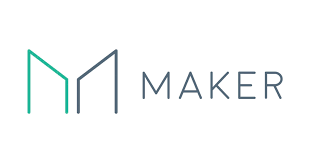
MKR holders are responsible for governing the Maker Protocol, one of the oldest DAOs in the blockchain space. Their governance includes adjusting policy for the DAI stablecoin, choosing new collateral types, and improving governance itself. Anyone can be an MKR holder and all are welcome in Maker DAO.
Maker DAO started as a foundation. The goal was to enable the community to make all governance decisions, so eventually the foundation was dissolved and Maker DAO was born. Now, all of the power is in the hands of the DAO, and the responsibility for stewarding the protocol is on the shoulders of the community. Although not without its share of hiccups and growing pains, Maker DAO is still one of the largest DAOs in terms of Total Value Locked (TVL), so clearly they have been successful.
Due to the large TVL and their need for high security, their governance decisions are all on-chain and every proposal is voted on by token holders. However, the token holders can also trust their votes to delegates if they wish. These delegates work almost full time at Maker DAO, focusing on improving the protocol and providing reports to token holders regarding their position on various proposals. Token holders can then review the reports of the delegates to decide if they will keep their delegation or choose a different delegate at any time. There is also a tiered system, similar to that in IOTA, where a different trust level within the governance structure can allow for different sets of permissions. This allows for more educated, less exploited voting outcomes and helps to support the delegation system.
Nouns DAO
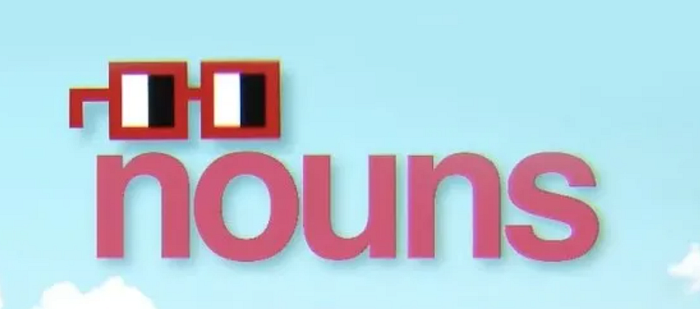
Nouns DAO is a newer DAO that utilizes a fork of Compound Governance and is the main governing body of the Nouns ecosystem. The Nouns DAO treasury receives 100% of ETH proceeds from daily Noun NFT auctions. Each Noun NFT is an irrevocable member of Nouns DAO and entitled to one vote in all governance matters. Noun votes are non-transferable (if you sell your Noun NFT the vote goes with it) but delegatable, which means you can assign your vote to someone else as long as you own your Noun.
Offering one new Noun NFT per day results in very linear, sustainable growth. One potential new person per day is able participate in their governance structure by purchasing a Nouns NFT. This way, they are able to get to know one another much better than offering a large number of NFTs at once, as individual voices can be lost with a large influx of new community members. Their process allows the original founders to pass down their vision and mindset to (at most) one new person per day. This fosters a strong sense of cohesion, culture, and community.
In terms of structure, Nouns DAO almost prides itself on its lack of structure. It’s the vision that is of the utmost importance to the DAO. As long as the proposal is in line with the overall vision, it can be funded. This is even the case if a proposal requires a fork of Nouns DAO or a new, separate sister project. This flexibility is a clear departure from most other protocols, but a novel approach that is gaining some traction.
Wrapping It All Up
When considering the history of organizations, DAOs are still in their infancy. Through trial and error, governance processes are adapted and refined, and each DAO can learn from the successes and failures of others. While there may be similar steps to improving any protocol, the most important action one can take is to simply get involved! In most cases, involvement will start by contributing to discussion about potential or active proposals and ideas. This contribution can be highly rewarding as it solidifies one’s place in the community and ensures that their voice is heard and considered for the betterment of the protocol.
📢 IOTA 2.0: What sets it apart?
[ - by Ness]
The design!
In his latest Spec Weekly video Kutkraft had a closer look at Billy Sander’s presentation at the TangleCon, where he spoke about the design principles of IOTA 2.0
There is one big problem in the digital space. Digital actors need a shared state to interact. But whoever has control over this shared state has the power and can control the whole system. In those centralized solutions you almost always have a monopoly. The solution? DLTs!
IOTAs vision statement is: Digital Autonomy for Everyone. But what does that mean? Generally speaking, it means that you control your digital life, your assets, your identity, your data. At the same time, it should be easy to use and accessible. The key is to create a balance between digital actors interacting together. Therefore, IOTA developed four important design principles, of which two were covered in this Spec Weekly video.
Principle 1: Accessibility
On blockchains the block producers act like an oligopoly. There are only a few of them but there is no way around them if a user wants to make a transaction on the blockchain. This leads to a kind of war between users and block producers since they follow different incentives. Users bring value, create transactions, use the network and want a cheap throughput. Block producers on the other hand are service providers that want expensive throughputs since they want to extract as much value from the network as possible. This way, digital autonomy can’t be protected. But there is a solution: IOTA. In order to protect digital autonomy, users and block producers must be the same.
Another problem is the low block creation rate of blockchains. If too many blocks are created at the same time, forks occur and degrade the security. With DAGs it is possible to increase the block creation time 100 to 1,000. And here is how that works: When blocks arrive at the same time they DO NOT cause a fork. Instead, the next block can reference both blocks. This mechanism is only limited by how good the node hardware is (bandwidth and computational power) and DAGs will scale with technology.
Principle 2: Parallelism
Generally, there are two concepts on how to process blocks on a blockchain: Parallel processing (increases speed) and stream processing (increases efficiency). With stream processing things are processed at a constant average rate (opposed to batch processing). But there is a fundamental blockchain tradeoff. Blocks are either processed parallel and as a batch OR sequential and as a stream. So there are two options: small blocks and high throughput or big blocks and low throughput.
IOTA however will be able to do parallel and stream processing at the same time. This has several advantages:
- High block production rate
- All blocks processed on arrival
- Concurrent blocks processed in parallel
- Largest throughput possible on consumer grade hardware
Parallelism is one of the primary architecturally unique features of IOTA!
If you want to know what the other two principles are you can either wait for Kutkraft’s next video or watch Billy’s whole presentation at TangleCon:
🆕 Tangle Treasury Update
[ - by DigitalSoulx]
As previously reported, we have offered to include Shimmer community Treasury updates in each issue of the Tangleverse Times, as a way to thank the community for their support of our publication. These updates are intended to be a way to see the status of the treasury at a glance, but for more detail about each of the individual proposals I would highly recommend visiting the great website that JD is maintaining! It is quite complete and up-to-date. So, here is the current status of the treasury:

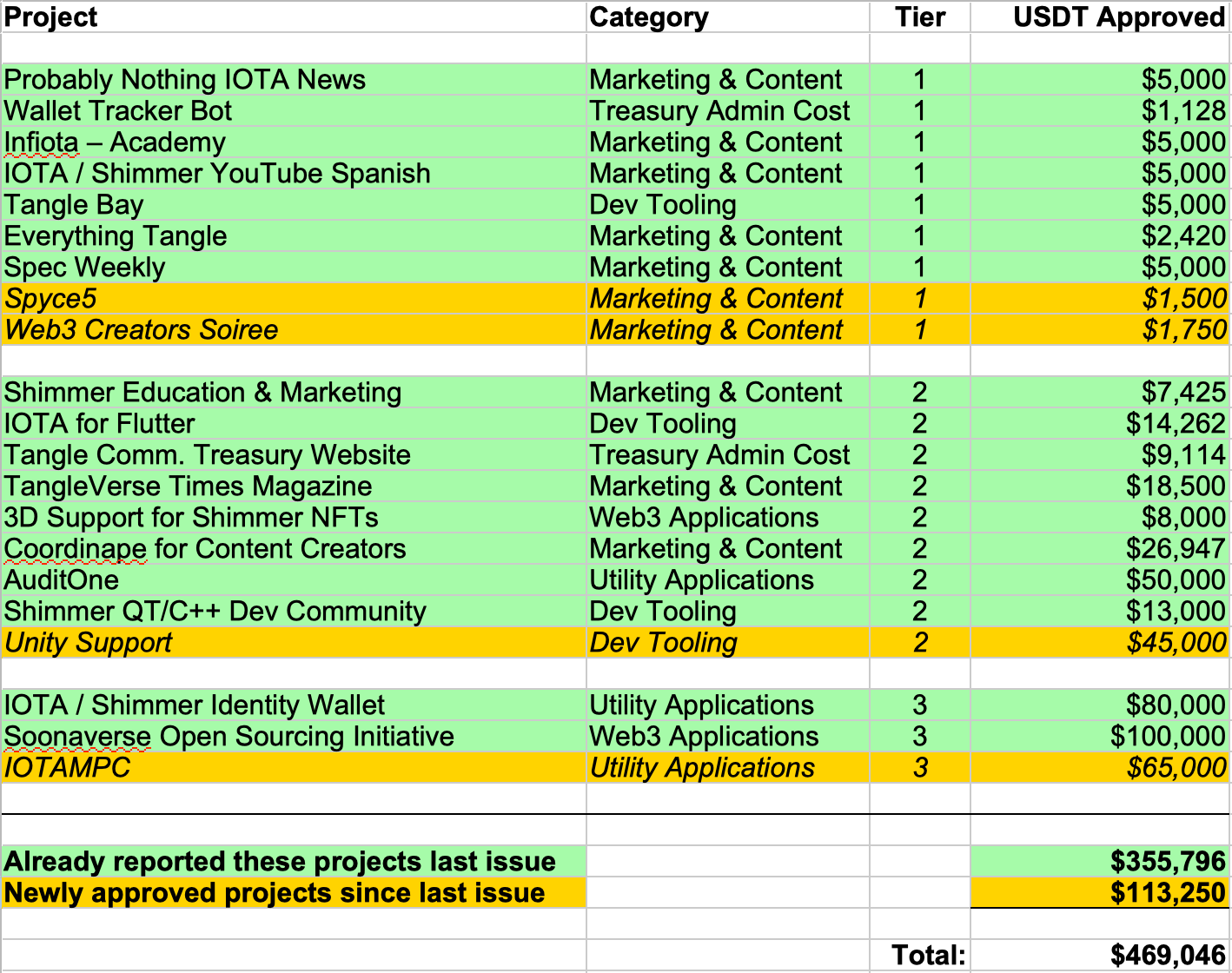
And that’s a wrap! Please like, share, smash that subscribe… or better yet, join us! Do you love to write? Passionate about the IOTA ecosystem? Do you have a project to share? Master at making memes?
We want to help the community discover their strengths and stay updated about everything IOTA. We cannot do this alone. Community participation and feedback will help keep The Tangleverse Times up-to-date and invaluable. Help us help the ecosystem.
The best way to reach us is through Discord: discord.gg/2BeCTUMPAM
Follow us on Twitter: @IOTAcontentDAO and @TangleverseWeb
Special thanks and honourable mentions to all the hardworking ICCD degens who contributed (in the form of written, editorial, design, advisory, and memetic support) to this edition: DigitalSoul.x (Rob), Mart, Ness, ID.iota, Mariana de la Roche, Mat Yarger, Jelle Millenaar and Epoch Zero.
If you enjoyed the newsletter and would like to see it continue to grow, you can also donate here: iota1qp7l8s5026k7gvd2m0t8cyj754geslnl6vtt0cxzf0xlsvyeug2pv85rh78 smr1qzv5agn7ty5kvmucu6atl4hkhqp3r9cgurh4pdw0rml347tc0jxtwmn4dhk